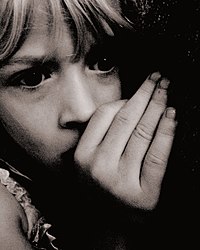
A review of methods of assessing preference for social stimuli.
Sign Up to like & getrecommendations! Published in 2023 at "Journal of applied behavior analysis"
DOI: 10.1002/jaba.981
Abstract: Research on preference and reinforcer assessments has historically focused on the evaluation of edible and leisure reinforcers, but the identification and use of individualized social reinforcers may be beneficial for several reasons. Recently, many studies… read more here.
Keywords: assessing preference; preference social; methods assessing; preference ... See more keywords

The effects of CRF and urocortins on the preference for social novelty of mice
Sign Up to like & getrecommendations! Published in 2017 at "Behavioural Brain Research"
DOI: 10.1016/j.bbr.2017.02.009
Abstract: HighlightsMale and female CFLP mice were investigated in a Crawley social interaction test.CRF and UCN 1 decreased the preference for social novelty of male mice.CRF1 receptor mediates the effects of CRF and UCN 1 on… read more here.
Keywords: social novelty; ucn ucn; preference social; mice ... See more keywords

Infants' Preference for Social Interactions Increases from 7 to 13 Months of Age.
Sign Up to like & getrecommendations! Published in 2021 at "Child development"
DOI: 10.1111/cdev.13636
Abstract: This study examined 7-to-13.5-month-old middle-class Western infants' visual orienting to third-party interactions in parallel with their social attention behavior during own social interactions (Leipzig, Germany). In Experiment 1, 9.5- to-11-month-olds (n = 20) looked longer than 7-… read more here.
Keywords: infants preference; social interactions; age; increases months ... See more keywords

A circuit from dorsal hippocampal CA3 to parvafox nucleus mediates chronic social defeat stress–induced deficits in preference for social novelty
Sign Up to like & getrecommendations! Published in 2022 at "Science Advances"
DOI: 10.1126/sciadv.abe8828
Abstract: The preference for social novelty is crucial to the social life of humans and rodents. However, the neural mechanisms underlying social novelty preference are poorly understood. Here, we found that chronic social defeat stress (CSDS)… read more here.
Keywords: circuit; social novelty; chronic social; preference social ... See more keywords

Quantifying preference for social stimuli in young children using two tasks on a mobile platform
Sign Up to like & getrecommendations! Published in 2022 at "PLoS ONE"
DOI: 10.1371/journal.pone.0265587
Abstract: Children typically prefer to attend to social stimuli (e.g. faces, smiles) over non-social stimuli (e.g. natural scene, household objects). This preference for social stimuli is believed to be an essential building block for later social… read more here.
Keywords: preference social; choice; task; social stimuli ... See more keywords